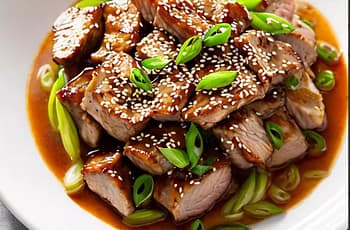Privacy Policy
Last Updated On 02-Oct-2022
Effective Date 03-Oct-2022
This Privacy Policy describes the policies of Blog chinese food recipes, Spain, Spain 28802, Spain, email: alex201168@hotmail.com, phone: N/a on the collection, use and disclosure of your information that we collect when you use our website ( https://authentic-chinese-food-recipes.com ). (the “Service”). By accessing or using the Service, you are consenting to the collection, use and disclosure of your information in accordance with this Privacy Policy. If you do not consent to the same, please do not access or use the Service.
We may modify this Privacy Policy at any time without any prior notice to you and will post the revised Privacy Policy on the Service. The revised Policy will be effective 180 days from when the revised Policy is posted in the Service and your continued access or use of the Service after such time will constitute your acceptance of the revised Privacy Policy. We therefore recommend that you periodically review this page.
How We Share Your Information:
We will not transfer your personal information to any third party without seeking your consent, except in limited circumstances as described below:
Ad service
Analytics
We require such third party’s to use the personal information we transfer to them only for the purpose for which it was transferred and not to retain it for longer than is required for fulfilling the said purpose.
We may also disclose your personal information for the following: (1) to comply with applicable law, regulation, court order or other legal process; (2) to enforce your agreements with us, including this Privacy Policy; or (3) to respond to claims that your use of the Service violates any third-party rights. If the Service or our company is merged or acquired with another company, your information will be one of the assets that is transferred to the new owner.
Your Rights:
Depending on the law that applies, you may have a right to access and rectify or erase your personal data or receive a copy of your personal data, restrict or object to the active processing of your data, ask us to share (port) your personal information to another entity, withdraw any consent you provided to us to process your data, a right to lodge a complaint with a statutory authority and such other rights as may be relevant under applicable laws. To exercise these rights, you can write to us at alex201168@hotmail.com. We will respond to your request in accordance with applicable law.
Do note that if you do not allow us to collect or process the required personal information or withdraw the consent to process the same for the required purposes, you may not be able to access or use the services for which your information was sought.
Cookies Etc.
To learn more about how we use these and your choices in relation to these tracking technologies, please refer to our Cookie Policy.
Security:
The security of your information is important to us and we will use reasonable security measures to prevent the loss, misuse or unauthorized alteration of your information under our control. However, given the inherent risks, we cannot guarantee absolute security and consequently, we cannot ensure or warrant the security of any information you transmit to us and you do so at your own risk.
Third Party Links & Use Of Your Information:
Our Service may contain links to other websites that are not operated by us. This Privacy Policy does not address the privacy policy and other practices of any third parties, including any third party operating any website or service that may be accessible via a link on the Service. We strongly advise you to review the privacy policy of every site you visit. We have no control over and assume no responsibility for the content, privacy policies or practices of any third party sites or services.
Grievance / Data Protection Officer:
If you have any queries or concerns about the processing of your information that is available with us, you may email our Grievance Officer at Blog chinese food recipes, Spain, email: alex201168@hotmail.com. We will address your concerns in accordance with applicable law.
We embed a Facebook widget to allow you to see number of likes/shares/recommends and “like/share/recommend” our webpages. This widget may collect your IP address, your web browser User Agent, store and retrieve cookies on your browser, embed additional tracking, and monitor your interaction with the widget, including correlating your Facebook account with whatever action you take within the widget (such as “liking/sharing/recommending” our webpage), if you are logged in to Facebook. For more information about how this data may be used, please see Facebook’s data privacy policy: https://www.facebook.com/about/privacy/update.
We use a Twitter Tweet widget at our website. As a result, our website makes requests to Twitter’s servers for you to be able to tweet our webpages using your Twitter account. These requests make your IP address visible to Twitter, who may use it in accordance with their data privacy policy: https://twitter.com/en/privacy#update
We use a GooglePlus widget at our website. As a result, our website makes requests to Google’s servers for you to be able to share our webpages using your GooglePlus account. These requests make your IP address visible to Google, who may use it in accordance with their data privacy policy: https://policies.google.com/privacy
We use a Linkedin Share widget at our website to allow you to share our webpages on Linkedin. These requests may track your IP address in accordance with their data privacy policy: https://www.linkedin.com/legal/privacy-policy
We use Pinterest Save widget at our website to allow you to pin images to Pinterest from our webpages. These requests may track your IP address in accordance with their data privacy policy: https://policy.pinterest.com/en/privacy-policy
We use Reddit Badge widget at our website which may log information when you interact with the widget. This may include your IP address, user-agent string, browser type, operating system, referral URLs, device information (e.g., device IDs), pages visited, links clicked, user interactions (e.g., voting data), the requested URL and hardware settings, in accordance with their privacy policy: https://www.redditinc.com/policies/privacy-policy
We use StumbleUpon Badge widget at our website which may log information when you interact with the widget. Log Data is a form of Non-Identifying Information, in accordance with their privacy policy: http://www.stumbleupon.com/privacy
Privacy Policy generated with CookieYes.









